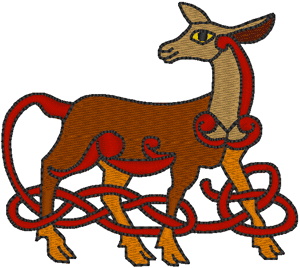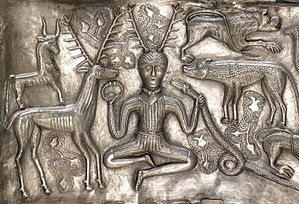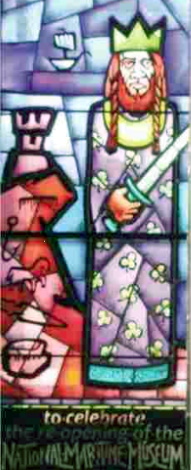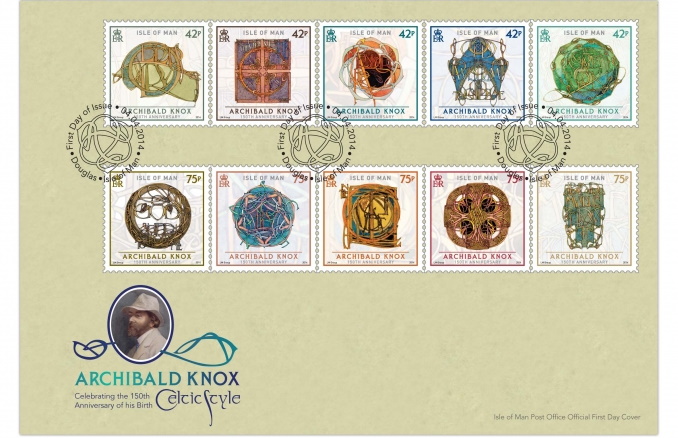The Deer's Cry and Its Link to Animism and Shapeshifting in Celtic Mythology

Celts had and continue to hold a great respect for the environment. Nature, the elements and the other creatures which share their land and sea held a sacred significance. Animals and birds were vital to everyday life and well-being and they feature in art, literature, rituals and religious beliefs. Our landscape, geographic location and wildlife has played a pivotal role in our history, beliefs and recognition of ourselves. For our culture tells us that we are part of and completely tied to the lands in which we live or from where we came. Pre-Christian Celtic beliefs perceived the presence of the supernatural in every mountain, river, coastal feature, spring, loch, marsh, tree and rock formation. All had their own spirit and life force that were integral to, and interwoven with, the material world. Humans formed just one part of this understanding of an interlinked world. Given this strong link with nature, it is not difficult to see why the idea of shapeshifting, the ability of a being or creature to transform its physical form or shape was also widespread in Celtic mythology and folklore.
One of a number of such animals which can change form is the deer. In Celtic mythology there are many stories involving those associated with a legendary figure, and spirits or deities who may take the form of deer. Such as the Celtic mythological figures of Oisín and Sadhbh. His father, the legendary hunter warrior Fionn mac Cumhaill, had married Sadhbh, a woman who had been turned into a deer, but transformed back to human form when she met Fionn. Sadly Fionn lost her when she was tricked by an evil force to once again return to the wild as a deer. However, out of this union he was blessed with a son, Oisín, whose name means little deer or fawn. Oisín was destined to become a great poet of Ireland and Fianna warrior.

Another figure that is related to the deer is the Celtic god Cernunnos. He is shown with the horns of a stag. Among the various images of Cernunnos is believed to be one on the Gundestrup Cauldron. This is a decorated silver vessel, thought to date from between 150 BC and 1 BC. It was discovered in a peat bog in Denmark in 1891. In addition to Cernunnos' there are a number Celtic objects depicted, including helmets and the Celtic war trumpet (carnyx). How this magnificent cauldron ended up in Denmark remains a mystery.

It is therefore not really a surprise that therianthropy, which is the mythological ability of human beings to metamorphose into other animals by means of shapeshifting, continued with the spread of Christiaity into the Celtic lands. Holding on to many of the traditions of pre-Christian belief systems, could well have facilitated the conversation of the people to the new religion being introduced at the time. We know that many of the dates used for Christian celebrations were taken from those for existing Celtic ones for this very purpose. One such example of shapeshifting used in Celtic Christian storytelling is that of the Deer’s Cry. The Deer's Cry is a lorica, which is Christian prayer recited for protection. The Deer's Cry is attributed to Saint Patrick during his Irish ministry in the 5th century. It is also known as Saint Patrick's Breastplate, The Lorica of Saint Patrick or Saint Patrick's Hymn. The Latin word lōrīca originally meant armour or breastplate. It is said that Saint Patrick sang The Deer's Cry when subject to an ambush laid by Lóegaire. Lóegaire mac Néill, according to the Irish annals and king lists, was as a 5th century King of Tara or High King of Ireland and said to be an opponent of Saint Patrick. In laying a trap for Patrick his aim was to prevent him going to Tara to spread his faith. In answer to Patrick's prayer for protection, he and his monks were turned into or given the appearance to his enemies of being wild deer with a fawn following them. So evading the ambush.
There is a beautiful illuminated version of The Deer's Cry in the Manx Museum (Manx Gaelic: Thie Tashtee Vannin) consisting of a series of pages of illuminated lettering bound into a book. It was designed and executed by renowned Manx designer Archibald Knox (1864-1933), using designs from the many Norse and Celtic art that can be found on the Isle of Man (Mannin). The illustrations by Archibald Knox can be seen on the Manx Museum website. In 2014 there was a Manx stamp release, marking the 150th anniversary of the birth of Archibald Knox which focussed on designs from his iconic work The Deer’s Cry.

Content type:
- Pan-Celtic
Language:
- English






